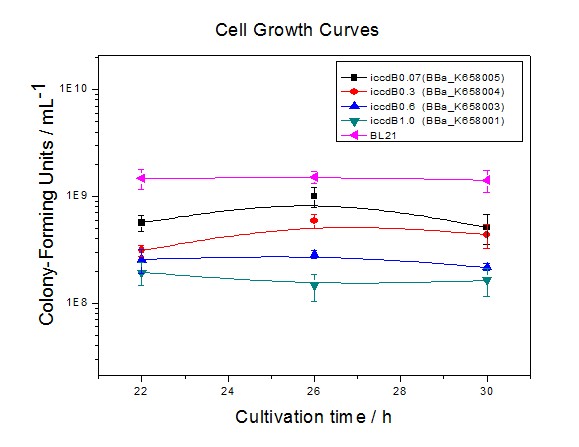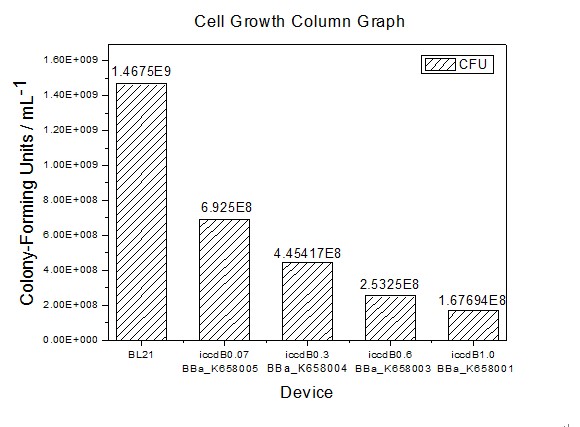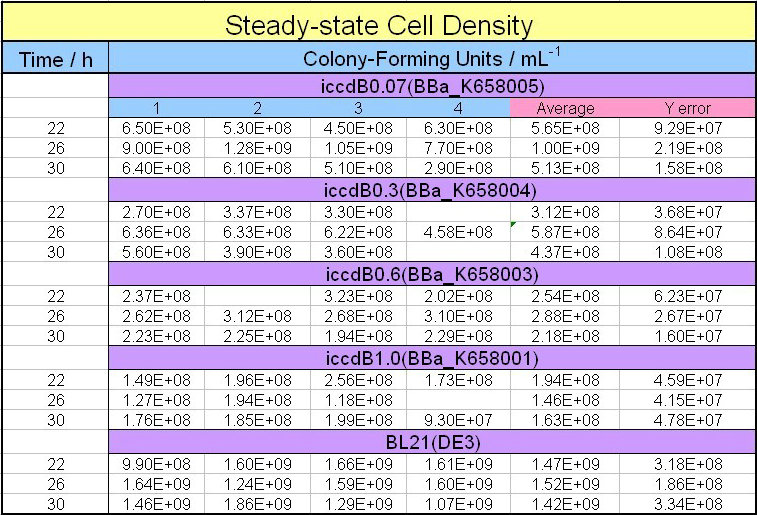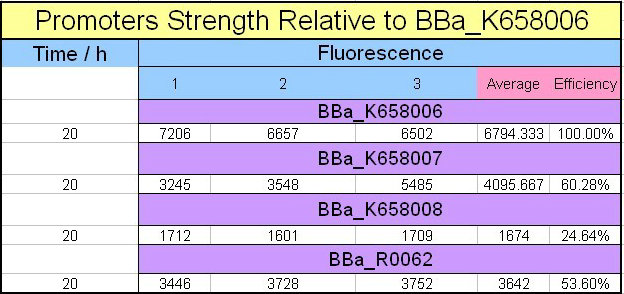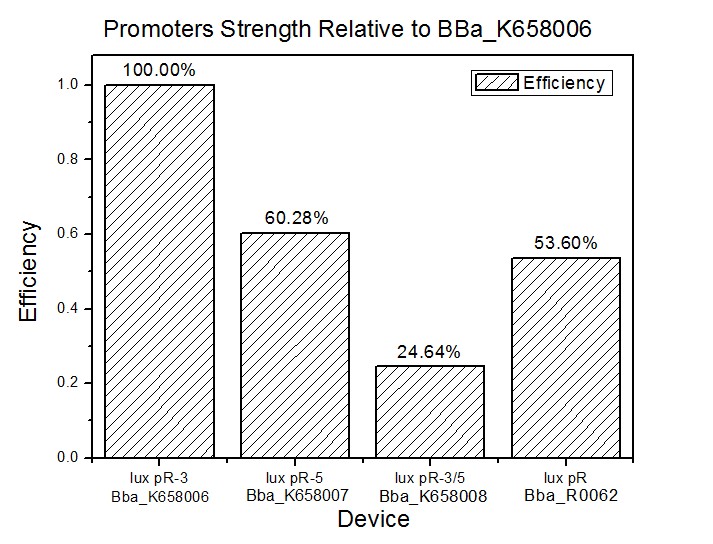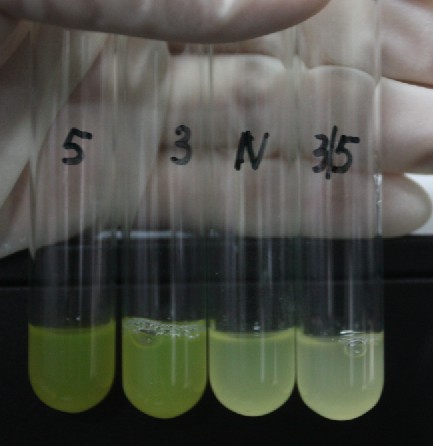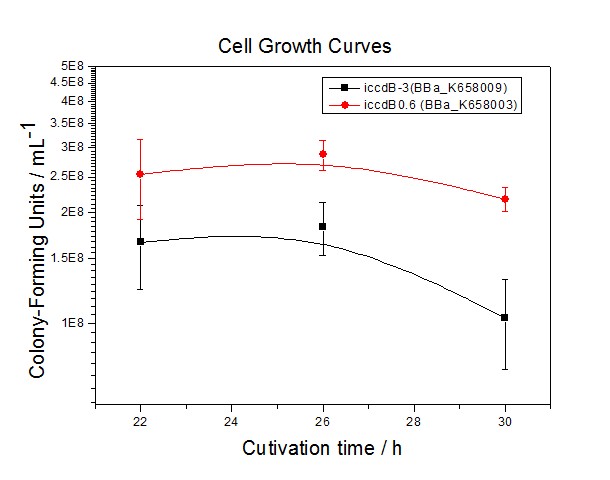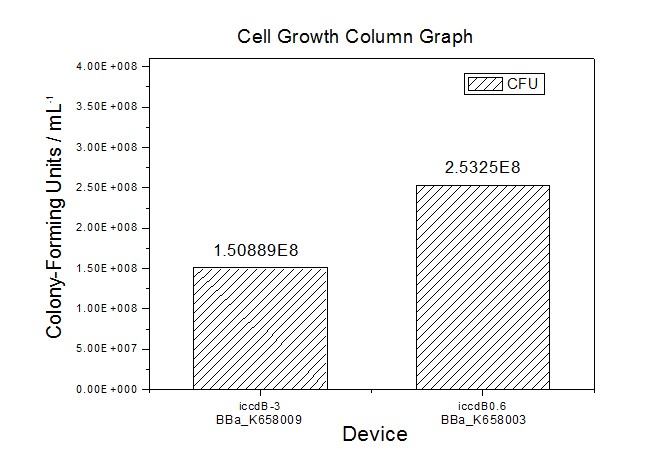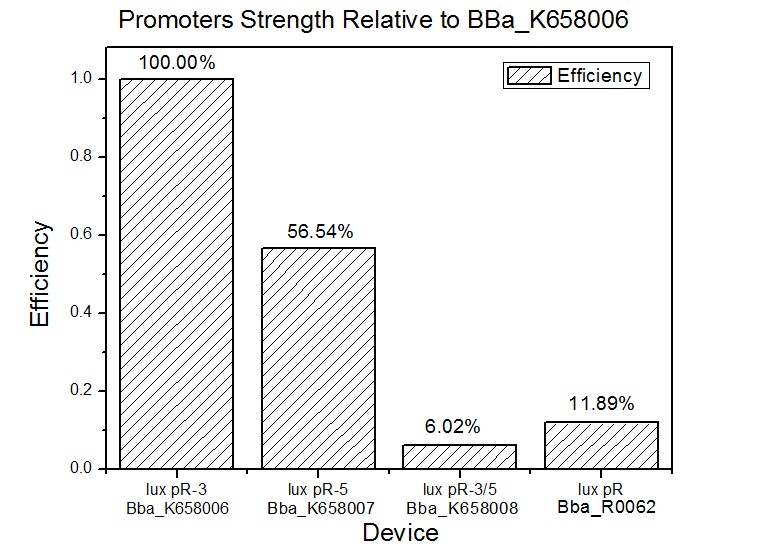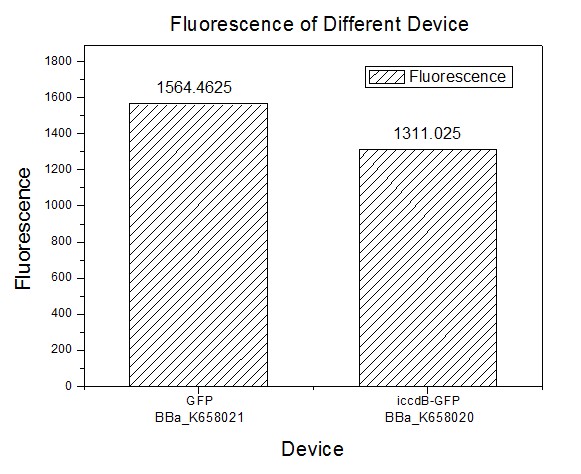Team:XMU-China/Result
From 2011.igem.org
(Difference between revisions)
| Line 12: | Line 12: | ||
[[Image:XMU_China_113.jpg|left|Figure 1 Experimentally measured growth curves of BL21’ cells without iccdB0.07 (red dot) and with iccdB0.07 ON (black dot).|frame|Figure 1 Experimentally measured growth curves of BL21’ cells without iccdB0.07 (red dot) and with iccdB0.07 ON (black dot).]] | [[Image:XMU_China_113.jpg|left|Figure 1 Experimentally measured growth curves of BL21’ cells without iccdB0.07 (red dot) and with iccdB0.07 ON (black dot).|frame|Figure 1 Experimentally measured growth curves of BL21’ cells without iccdB0.07 (red dot) and with iccdB0.07 ON (black dot).]] | ||
| + | <html> | ||
| + | <img src="http://partsregistry.org/wiki/images/4/41/XMU_China_block.jpg"> | ||
| + | </html> | ||
| + | |||
| + | |||
==Population-control devices with RBS of different strength== | ==Population-control devices with RBS of different strength== | ||
| Line 63: | Line 68: | ||
Figure 7 and Figure 8 illustrate that the population-control device iccdB-3 programs a relatively lower steady-state cell density compared with iccdB0.6. This matched the result of the test on four lux pR promoters’ strength in our IR-GFP device (BBa_K658016). The strength of lux pR promoters were defined as follows: | Figure 7 and Figure 8 illustrate that the population-control device iccdB-3 programs a relatively lower steady-state cell density compared with iccdB0.6. This matched the result of the test on four lux pR promoters’ strength in our IR-GFP device (BBa_K658016). The strength of lux pR promoters were defined as follows: | ||
| - | [[Image: | + | [[Image:XMU_China_122.jpg|left|Figure 9 Efficiency of promoter lux pR (R0062) and its 3 mutants|frame|Figure 9 Efficiency of promoter lux pR (R0062) and its 3 mutants.]] |
<html> | <html> | ||
<img src="http://partsregistry.org/wiki/images/4/41/XMU_China_block.jpg"> | <img src="http://partsregistry.org/wiki/images/4/41/XMU_China_block.jpg"> | ||
Revision as of 02:12, 6 October 2011
 "
"



